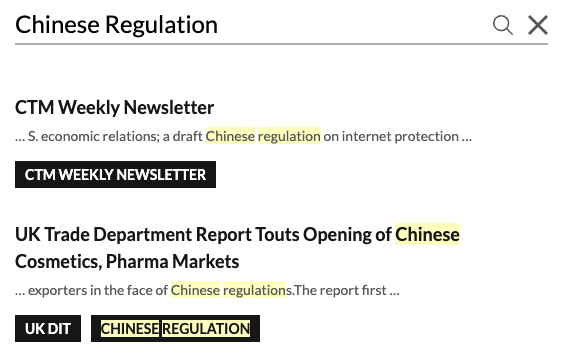The U.S. Commerce Department has preliminarily determined that countervailable subsidies are being provided to producers and exporters of certain mobile access equipment and subassemblies thereof from China (case C-570-140).
As explained in the Decision Memorandum, the product at issue was defined as follows: "The merchandise covered by this investigation consists of certain mobile access equipment, which consists primarily of boom lifts, scissor lifts, and material telehandlers, and subassemblies thereof."
Pursuant to this preliminary determination, the Department set the following estimated duty rates for specific companies:
|
Company |
Subsidy rate (percent) |
|
Lingong Group Jinan Heavy Machinery Co., Ltd11 |
4.09 |
|
Zhejiang Dingli Machinery Co., Ltd12 |
23.43 |
|
Jinan Zhongtian International Trading 13 |
435.06 |
|
Zhongshan Shiliwang Machinery Co., LTD 14 |
435.06 |
|
Yantai Empire Industry and Trade 15 |
435.06 |
|
Shandong Lede Machinery 16 |
435.06 |
|
Shandong Huifeng Auto Fittings 17 |
435.06 |
|
Jinan Zhongtang Mechanical Equipment 18 |
435.06 |
|
Lingong Group Jinan Heavy Machinery (Mobile Elevating Work
Platforms) 19 |
435.06 |
|
All Others |
20.47 |
One part of the reasoning worth noting is the Department's rejection of the use of currency undervaluation as a factor to be considered in estimating the subsidies. The use of currency undervaluation in this context has long been the subject of discussion in U.S. countervailing duty law and practice. The explanation on this point in the Department's Decision Memorandum noted that: "While Treasury determined that the RMB was undervalued during the POI, it also found that this undervaluation was not the result of government action on the exchange rate in 2020." The full explanation was as follows:
On April 23, 2021, Commerce requested that the Department of Treasury (Treasury) provide its evaluation and conclusion on the allegation that China’s currency, the renminbi (RMB), was undervalued during the 2020 POI. In particular, pursuant to 19 CFR 351.528(c), we requested that Treasury provide an evaluation and conclusion with respect to the determinations under 19 CFR 351.528(a) and (b)(1). On May 28, 2021, Treasury responded with the requested evaluation and conclusion, and pursuant to 19 CFR 351.301(c)(4), Commerce provided an opportunity for interested parties to comment and provide rebuttal factual information regarding the Treasury Letter. On June 18, 2021, the GOC and the petitioner provided rebuttal factual information and comments regarding the Treasury Letter. On July 9, 2021, Commerce supplemented the record with further information relating to the Chinese economy derived from the International Monetary Fund (IMF) and Organization for Economic Cooperation and Development (OECD). On July 16, 2021, the GOC provided comments and rebuttal factual information regarding the IMF and OECD data.
…
Commerce’s analysis regarding the benefit calculation for this program is guided by 19 CFR 351.528. Pursuant to 19 CFR 351.528(a), Commerce considers whether a benefit is conferred from the exchange of currency under a unified exchange rate system only if that currency is undervalued. Pursuant to 19 CFR 351.528(a)(2), we normally will make an affirmative finding of undervaluation only if there has been government action on the exchange rate that contributes to that undervaluation. Consistent with 19 CFR 351.528(c), we requested that “the Secretary of the Treasury provide Treasury’s evaluation and conclusion as to the determinations” under 19 CFR 351.528(a) and (b)(1). On May 28, 2021, we received Treasury’s analysis on currency undervaluation. While Treasury determined that the RMB was undervalued during the POI, it also found that this undervaluation was not the result of government action on the exchange rate in 2020. Treasury’s assessment was made using a multilaterally consistent model assessing external imbalances and exchange rate misalignments. In addition to considering net sales of foreign exchange reserves in the subject country and other macroeconomic and policy variables, the model evaluated the extent of a foreign currency’s undervaluation vis-à-vis the USD and assessed the degree to which that may have occurred because of government intervention. Therefore, in accordance with 19 CFR 351.528(a)(2), we preliminarily find that the RMB’s undervaluation did not provide a benefit to producers/exporters of mobile access equipment during the POI. As a result, we did not analyze the financial contribution or specificity of this program for the purposes of this preliminary determination.
Interested parties will now have an opportunity to comment on the preliminary determination. The Department's final determination in the case is currently scheduled for October 12. The ITC's final injury determination is scheduled for November 26.

